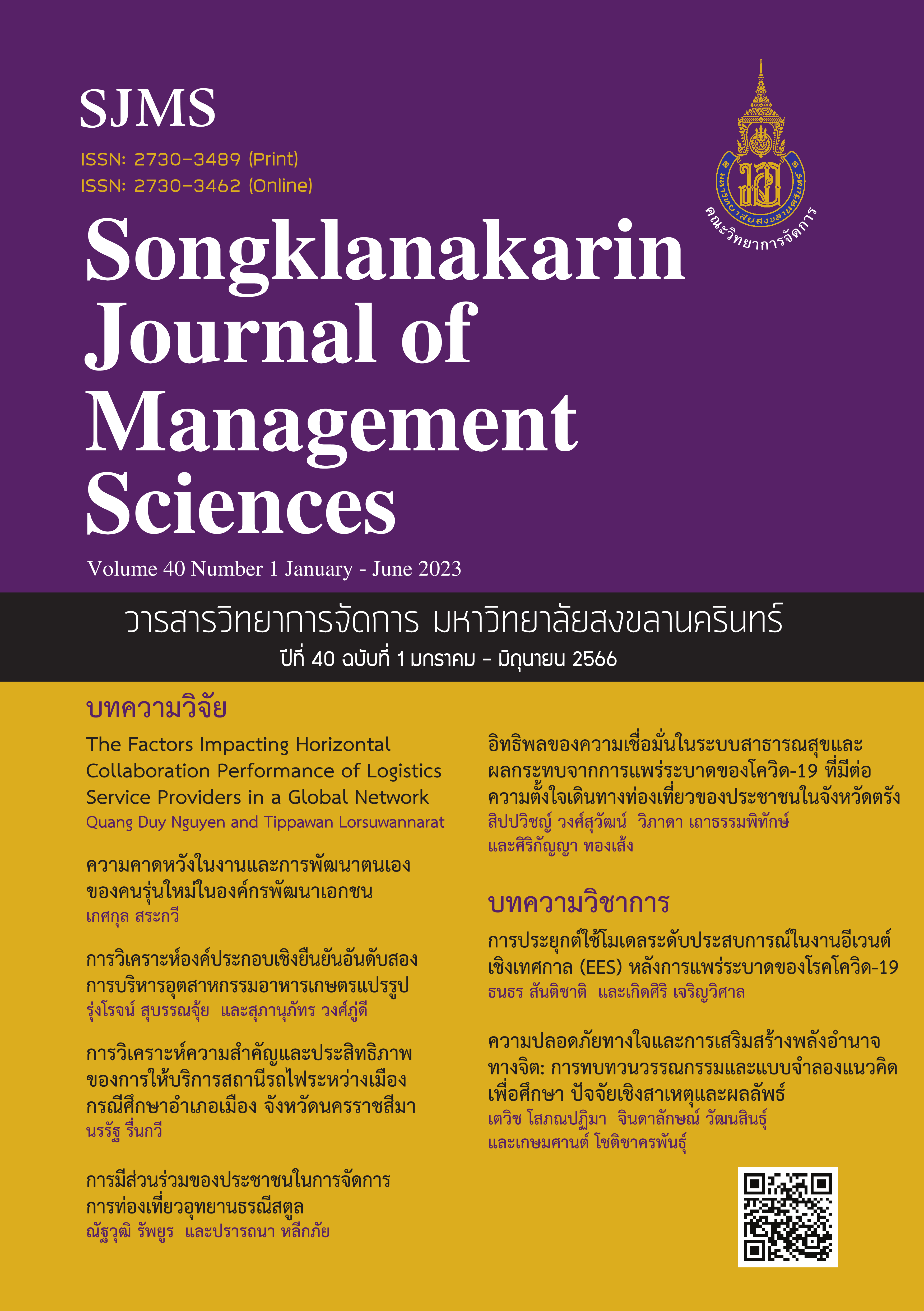Importance-Performance Analysis for Services of Intercity Railway Station: Case Study of Nakhon Ratchasima
Main Article Content
Abstract
The railway station is an important factor that influences the decision to use a public transport mode. The railway is the lowest cost and environmentally friendly. This study aims to assess the service qualities and find the solution to improve the Nakhon Ratchasima Railway Station and Thanon Jira Junction Railway Station. These stations have highest passenger in Nakhon Ratchasima. This study is developed base on a theory of service qualities. The samples were collected from the passengers of Nakhon Ratchasima Railway Station and Thanon Jira Junction Railway Station by “Convenience sample”, one of the nonprobability samples methods. The total sample size is 400 respondents. Variables of passengers’ satisfaction are separated as 4 dimensions, consist of safety, facility, marketing and service. The data are analyzed by descriptive statistics, then using a decision tree model was used to identify the importance of the service quality indicators. The last step was to develop the importance-performance analysis (IPA) to allocate those indicators into four quadrants. According to indicators allocated in a quadrant A (Concentrate here, High importance and Low satisfaction) such as cleanliness of restroom at the station and providing information regularly. The result of this study could fulfil the knowledge of railway station improvement. No study uses the importance-performance analysis to define the appropriate guidance. The contribution of is study is the effective recommendation to increase the customers’ satisfaction and also increase the public transport users.
Article Details

This work is licensed under a Creative Commons Attribution-NonCommercial-NoDerivatives 4.0 International License.
All published articles are SJMS’s copyright. The editorial board allows all published articles to be copied, excerpted, or disseminated with academic citation.
References
Ampawan, K. (2018). Data classification and Prediction. Retrieved August 18, 2021, from https://staff.informatics.buu.ac.th/~komate/886464/%5B6%5D-Classification.pdf
Champahom, T., Goodary, R., Beeharry, R., Jomnonkwao, S., & Ratanavaraha, V. (2019). Evaluating user’s satisfaction of bus service in Mauritius: Decision tree approach. Lowland Technology International, 20(4), 478-489.
Charouenworakhiet, S. (2005). A Study of Users' Satisfaction of Bangkok Station. Srinakharinwirot University.
Eboli, L., Forciniti, C., & Mazzulla, G. (2018). Spatial variation of the perceived transit service quality at rail stations. Transportation Research Part A: Policy and Practice, 114, 67-83.
Givoni, M., & Rietveld, P. (2007). The access journey to the railway station and its role in passengers’ satisfaction with rail travel. Transport Policy, 14(5), 357-365.
IBM. (2012). IBM SPSS Decision Trees 21. Retrieved July 20, 2021 from www.sussex.ac.uk/its/pdfs/SPSS_Decision_Trees_21.pdf
Kotler, P. (2000). Marketing Management (The Millennium edition). Upper Saddle River NJ: Prentice Hall.
Louppe, G., Wehenkel, L., Sutera, A., & Geurts, P. (2013). Understanding variable importances in Forests of randomized trees. Advances in Neural Information Processing Systems, 26. Retrieved July 20, 2021, from https://papers.nips.cc/paper/4928-understanding-variable-importances-in-forests-of-randomized-trees.pdf
Martilla, J. A., & James, J. C. (1977). Importance-Performance Analysis. Journal of Marketing, 41(1), 77-79.
Matzler, K., Bailom, F., Hinterhuber, H. H., Renzl, B., & Pichler, J. (2004). The asymmetric relationship between attribute-level performance and overall customer satisfaction: a reconsideration of the importance-performance analysis. Industrial Marketing Management, 33(4), 271-277.
Mohebifar, R., Hasani, H., Barikani, A., & Rafiei, S. (2016). Evaluating Service Quality from Patients' Perceptions: Application of Importance-performance Analysis Method. Osong Public Health and Research Perspectives.
Popet, K., Ritkaew, S., & Aujirapongpan, S. (2020). Foreign Tourists’ Behavior in Khanom Tourist Attraction Nakhon Si Thammarat Province. Songklanakarin Journal of Management Sciences, 37(2), 110-136.
Pu, S., & Zhan, S. (2021). Two-stage robust railway line-planning approach with passenger demand uncertainty. Transportation Research Part E: Logistics and Transportation Review, 152, 102372.
Sivilevičius, H., & Maskeliūnaitė, L. (2010). The criteria for identifying the quality of passengers’ transportation by railway and their ranking using ahp method. Transportation, 25(4), 368-381.
Tirakarnan, S. (2010). Nonparametric Statistics. Bangkok: Chalalongkorn University.
Tongchai, C. (2008). A Study of Secive Quality and Satisfaction for Hua-Lampong Station. Srinakharinwirot University.
Vos, M. C., & Hagen, M. V. (2020). Objective and subjective predictors of perceived cleanliness in train stations. Transportation Research Procedia, 42, 109-117.
Wararatanachai, P. (2016). Service Quality of Thai Railway, A Study of Southern Line (Bangkok-Hauhin). Suan Sunandha Rajabhat university.
Zhang, Y. G., Liu, Q. Y., Lei, D. Y., Xu, X. P., & Zhao, J. Z. (2016). Intercity Railway Passenger Transport Service Quality Evaluation Method Based on Passenger Satisfaction. DEStech Transactions on Economics, Business and Management.

